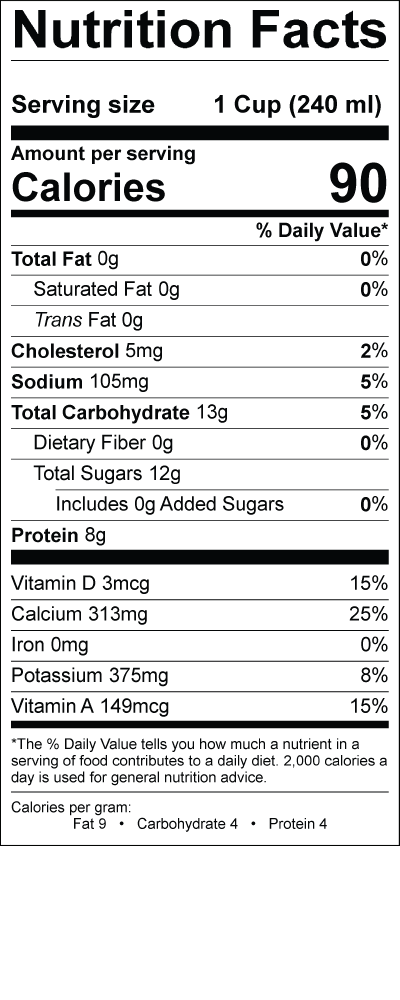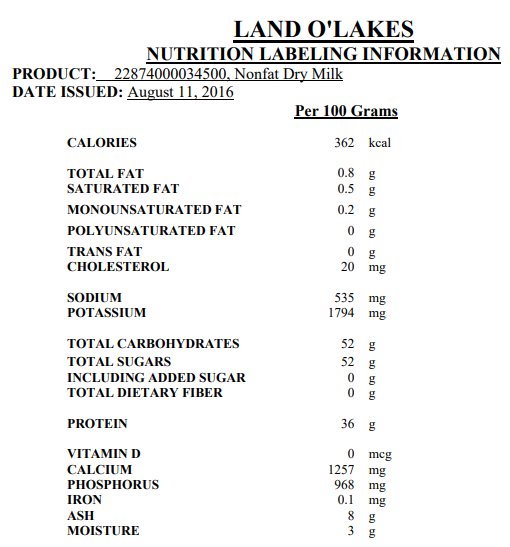

Unflavored white dairy milk and unsweetened soy and almond milk contain no added sugars. That said, your body may not absorb all of the calcium in soy milk since soy contains a natural compound (phytate) that inhibits calcium absorption.Īnd then there are added sugars. Many soy or almond milks are fortified with calcium to at least match the amount of calcium in dairy milk. When considering calcium, dairy milk naturally has about 300 milligrams per cup, and dairy products generally are considered the best absorbed source of calcium. Of note, some newer nut milk varieties have added pea protein.

Traditional almond milk lags behind with just 1 gram per cup. Soy milk comes in a close second with about 7 grams per cup. Soy and almond milks contain about 2 to 4 grams of fat per cup, but those fats are predominantly healthy, monounsaturated and polyunsaturated fats.Ĭomparing protein content, dairy milk takes the protein title with a little over 8 grams per cup. This is important to pay attention to, as the American Heart Association recommends limiting saturated fat to no more than 7 percent of calories in your overall diet. In terms of fat content, skim milk has negligible amounts of fat, but the amounts of cholesterol-raising saturated fat increase stepwise with 1 percent, 2 percent or whole milk.

Things that are important to focus on are fat content, protein, calcium and the amount of added sugars, if any, in each product. Generally, you can break down the benefits by reviewing the nutritional information for each beverage. However, there are wide nutritional differences, depending on the type of product and the brand. Are plant-based milks, such as soy milk or almond milk, healthier options?ĪNSWER: Cow’s milk (dairy) and other plant-based beverages, including soy milk and almond milk, all can be healthy choices. Fat-free milk, however, contains fewer calories than whole milk.DEAR MAYO CLINIC: I’ve always enjoyed drinking a glass of milk with most meals, but now there are so many options other than cow’s milk. It comes from cows and is derived from whole milk.įat-free milk, also known as skim or nonfat milk, contains 8g of protein per 1 cup serving, which is about the same as whole milk. Skim milk, in particular, has about 12 – 13g of lactose per 8-ounce serving and is generally not considered a good option for those who are intolerant to the sugar. In fact, milk contains the most lactose compared to other dairy products, like yogurt and cheese. There also isn’t any fat in skim milk to balance out the naturally sweet flavor of the milk. Skim milk sometimes tastes sweeter than full-fat due to the higher lactose content. For example, an 8-ounce cup of milk contains about 80 calories and no fat at all.Īn 8-ounce cup of milk contains about 12g of carbohydrates, which is roughly the same as whole milk.Īn 8-ounce cup of skim milk contains about 12g of sugar, roughly the same as whole milk. The cream and fat of the milk will eventually rise to the top, which is then removed completely.įat-free milk, also known as skim milk, is a low-calorie dairy option compared to whole or 2% milk.

There is a misconception that skim milk contains water to reduce the fat content however, skim milk is processed similarly to 2% milk.įat-free milk is created by allowing whole milk to separate for a period of time. Skim milk, also called fat-free or nonfat milk, has all the same essential nutrients as whole milk but no fat and fewer calories.
Nonfat milk nutrition label free#
Frequently Asked Questions about Fat Free / Skim Milk


 0 kommentar(er)
0 kommentar(er)
